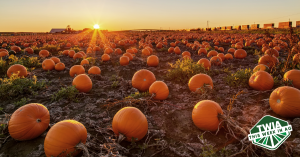Should regenerative agriculture resemble a Chinese menu, where you freely pick and choose the ingredients you want to include or eliminate from your entrée, rather than taking a holistic approach? That depends on your perspective of regen farming.
In a recent Stratus survey, 38% of US growers described themselves as regenerative farmers, meaning they use novel farming practices that minimize environmental impact. But the degree to which they do it was left to their interpretation. Perhaps that explains why just 30% of west coast farmers identify as regen, compared to 41% in the South and 39% in the Midwest. Does all this mean a Midwest farmer, who simply rotates corn and soybeans, qualifies as a regen farmer? Crop rotation has long been a pillar of regen ag. Switching to different crops each season in the same field diversifies soil microbial communities, enriches the soil, cuts down on fertilizer expenses and helps control weeds and pests. It ranks as the most important sustainability practice among not only regen farmers (89% rank it a 4-5 out of 5), but among conventional farmers (77%). Coming in second is no-till/min-till, although the gap among regen and conventional farmers is much wider (85% vs 52% rank it a 4-5). Another wide discrepancy involves the use of cover crops, with 47% of regen farmers placing the practice as important compared to 17% of conventional farmers. When it comes to adopting soil enhancing products, the gap is also significant: 35% have adopted biostimulants vs 20% of conventional farmers; 33% to 15% for soil microbials; 27% to 13% for biological controls. Regen farmers are also more apt to reduce fertilizer rates: 42% to 24%. Overall, these regen farmers tend to be in the older demographic (above 60 years of age), consider themselves early adopters and prefer to deal with independent ag retailers for their crop inputs (vs. national chains and coops).
While farmers in the study can self-describe as regen, those offering premiums prefer a more holistic approach. As Sustainable Aviation Fuel (SAF) markets become reality, farmers will need to utilize the combination of three practices – no-till/strip-till, cover crops and enhanced efficiency fertilizers (EEF) – to become eligible for premiums. For upcoming biofuel premiums, single practices (no-till or cover cropping are the big ones) may be enough to make farmers eligible for premiums from biofuel producers. Yet the more sustainable practices they employ, the lower their CI (carbon intensity) score, the higher the premium potential. Within the sustainably grown food/fiber market, driven by the private sector, some CPGs (consumer product goods) appear to be creating a menu of desired practices, from which farmers can choose the ones that best fit their system. But even among the staunchest regen advocates, their advice to those starting out is always the same: take a measured approach.
You can always tell the neighborhood “ag guy” by how their yard looks in November – by its color and the fact that it still needs mowed. Guilty as charged.

Related Posts

This Week in Ag #24
Yellow airplanes were buzzing over Iowa cornfields like bumblebees over zinnias during my drive to Iowa last week. There was a time when Midwest farmers would grind their teeth at the sight of these crop dusters. It usually meant a neighbor was treating a pest problem with a costly, unplanned aerial application. And that pest problem

This Week in Ag #88
No month is more associated with a crop than October is with a certain orange orb. That’s why it’s #NationalPumpkinMonth. Pumpkins are the centerpiece of the booming $1.25 billion US agritourism industry. You-pick pumpkin patches are a main attraction, providing family photo opportunities young mothers love even more than their pumpkin spice lattes. Corn mazes, apple

This Week in Ag #78
Imagine your boss walks into your office, says your productivity is tops in the company, but he’s reducing your salary by 25%. That’s what it’s like being a farmer in 2024. We’re expecting to see the largest year-over-year drop in farm income in history, on the heels of a 19% decline in 2023. Farmers and ag lenders

